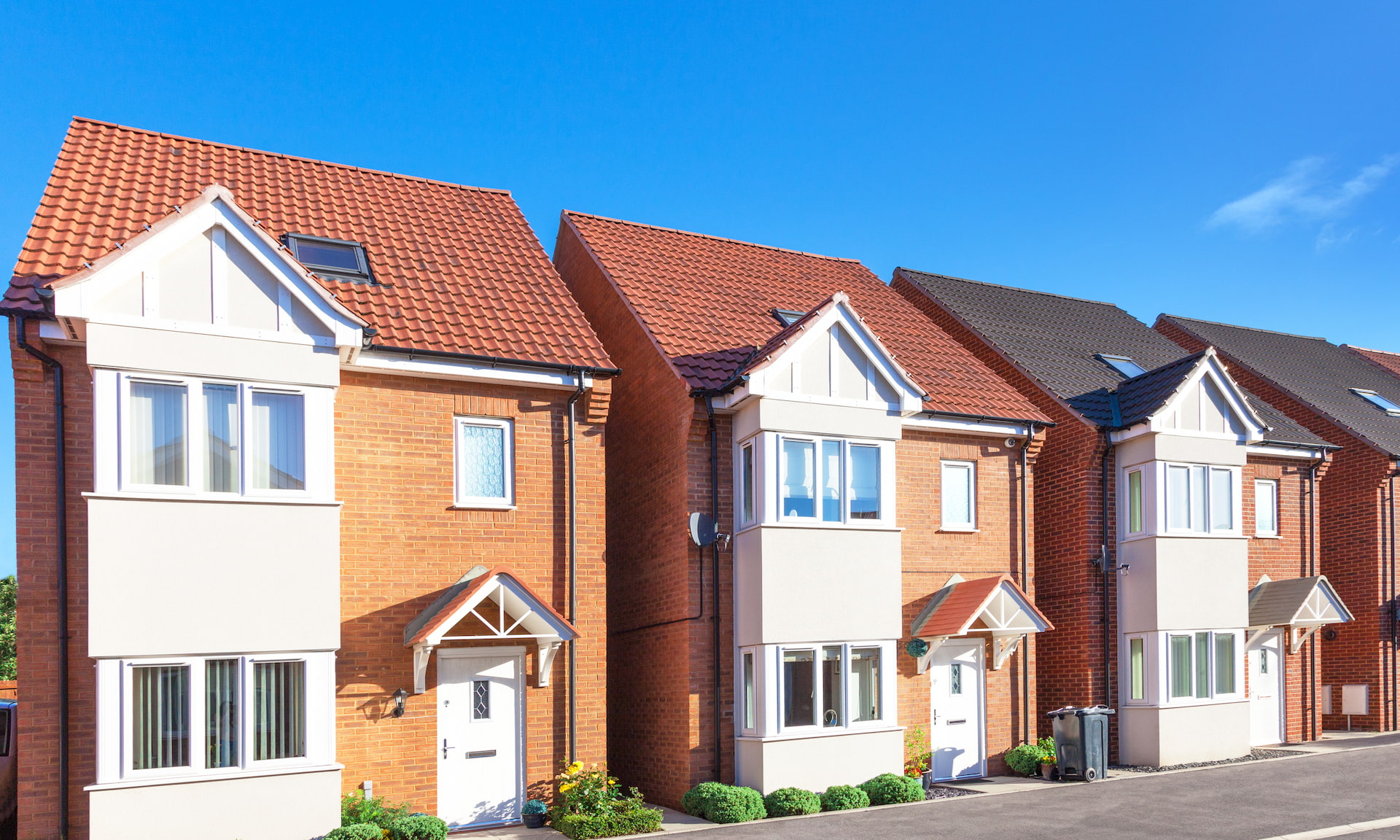
2021 has been a chaotic year to buy a home, with property prices soaring and mortgage rates dropping to below 1% in a market turbo-charged by the stamp duty holiday.
As the clock ticks down to the new year, however, concerns both old and new are rearing their heads. Rising inflation has made the Bank of England push the button on a base rate rise, potentially resulting in higher mortgage costs. Meanwhile, the government’s pledge to unlock homeownership for first-time buyers may result in rules being scrapped and purse strings loosened.
Here, we make 12 predictions about what might happen in the property market for first-time buyers and homeowners in 2022.
Will house prices continue to rise?
1. Price growth will slow down
The stamp duty holiday resulted in house prices soaring and properties flying off the shelves in 2021.
The perfect storm of tax savings and changing buyer priorities meant prices rose by as much as 10%, but experts believe growth will drop to nearer 3-4% next year.
Slower prices rises will provide some respite to prospective first-time buyers, who might find they have a better chance of getting on to the property ladder in a less frenzied environment.
2. Lack of supply means fewer homes will be sold
We’re likely to see fewer homes coming on to the market in 2022 and a big drop in the number of transactions going through.
The stamp duty cut and the end of Covid-19 lockdowns meant many people moved sooner than they otherwise would have done this year, resulting in transactions peaking at nearly 200,000 in June – double the figure we would see in a ‘normal’ year.
A lack of supply will prevent prices from falling and keep the market steady. On the plus side, it might also mean an end to the huge delays that have affected mortgage approvals and slowed down moves this year.
What will happen to mortgages?
3. All eyes will be on inflation and the base rate
Inflation will be a big theme in the new year. The Bank of England increased the base rate to 0.25% earlier this month in response to soaring inflation, and it could rise further in 2022.
The base rate affects the cost of borrowing for mortgage lenders, so any increase will almost certainly result in higher mortgage costs for consumers.
The good news is that the starting point for rate rises is incredibly low, with mortgages having become very cheap in the second half of 2021. So while it’s highly unlikely we’ll see the battle to offer sub-1% mortgages repeated next year, don’t expect rates to soar either.
4. Mortgage lending will fall significantly
UK Finance predicts mortgage lending will drop by £35bn in 2022, in what it describes as a ‘return to more stable levels of activity.’
Fewer people buying homes should result in a calmer mortgage market, with more activity likely to come from existing homeowners remortgaging and less from people buying homes.
Could 2022 be a good year for first-time buyers?
5. Affordability tests could help buyers on to the ladder
One of the biggest challenges facing first-time buyers is that they can’t borrow enough to keep pace with rising house prices.
Banks are only allowed to approve 15% of mortgages at more than four-and-a-half times the applicant’s annual salary, and other affordability tests can lock those with lower incomes out of homeownership.
The Bank of England could be set to relax one of its key lending rules in 2022, however. It’s going to consult on removing the rule which requires lenders to ensure borrowers could afford a 3% rise in their mortgage rate before they approve their application.
The change could be the difference between being accepted or rejected for a mortgage for some applicants, and could help many more take out bigger loans.
6. Mortgage terms will get even longer
Rising house prices have resulted in first-time buyers needing to take on longer mortgages. While 25-year mortgage terms were once standard, we’re now seeing 35-year and even 40-year mortgages becoming more common.
This trend is likely to continue, and there are rumours that a 50-year mortgage could soon be on the way.
If you are considering applying for a mortgage in 2022, it’s worth taking advice from a broker on your options and the best term for you. A longer mortgage term will cut your monthly repayments, but it’ll also mean you’ll be paying back the loan for much longer and pay more interest in the process.
7. 90% and 95% mortgage rates will remain attractive
90% and 95% mortgage rates have fallen steadily in the last few months, and analysis from Moneyfacts found average rates on 95% deals have dropped to the lowest levels since it started keeping records in 2011.
The return of low-deposit mortgages in the second half of 2021 was in part stimulated by the introduction of the mortgage guarantee scheme. And with the government continuing to push other initiatives such as First Homes and Help to Buy, it’s unlikely lenders will turn away from first-time buyers with small deposits in 2022.
If and when we do see a further rise in the base rate, it’s likely that 90% and 95% mortgages will be less affected than cheaper deals at lower loan-to-value levels.
What other trends will we see in 2022?
8. Mortgage payment holidays could still cause problems
The government’s coronavirus support measures have come to an end, but it’s likely that some homeowners will be affected by their legacy in the new year.
Formal mortgage payment holidays weren’t registered as missed payments on credit reports, but any additional support (such as suspending interest or extending the term of the loan) was flagged by lenders.
The knock-on effect of these support measures is that some borrowers may find it harder to remortgage to a better rate or take on additional borrowing when lenders assess their applications.
9. The ‘Buy Now, Pay Later’ boom could affect mortgage applications
‘Buy Now, Pay Later’ (BNPL) schemes have become hugely popular, but there are concerns over how lenders factor BNPL debts into mortgage calculations.
Our recent investigation found that only four of the biggest 10 lenders ask specifically about BNPL commitments when you apply for a mortgage agreement in principle. This means debts may not come to light until much later in the application process.
With BNPL showing no signs of disappearing, lenders and borrowers alike could face issues in 2022. The onus will be on banks to come up with a clear and consistent method of capturing BNPL agreements alongside other credit such as credit cards and loans early in the application process.
10. Banks will focus on fees and incentives rather than rates
As we mentioned earlier, mortgage rates are likely to rise in 2022. The good news is that lenders are finding other ways to entice prospective customers.
The most likely outcome is a growth in the number of fee-free mortgages and cashback incentives, both of which fell away when rates dropped earlier this year.
At the moment, up-front fees on mortgages can be as high as £1,499 to £1,999 on the cheapest deals, but don’t be surprised if that changes in 2022.
Getting your mortgage fee-free can make a big difference to the cost of your loan, but be wary of cashback deals. The money on offer is usually relatively small (around £500) and is only paid after the loan starts.
11. Homeowners will borrow more when remortgaging
With fewer sales likely to go through in 2022, we can expect to see more people stay put and renovate their homes.
One of the trends we saw emerge in 2021 was an increase in the number of borrowers using the equity in their homes to borrow extra when remortgaging, allowing them to fund home improvements without significantly increasing their monthly outgoings.
In many cases, low mortgage rates have made additional borrowing cheaper than taking out a personal loan, and some banks offer better rates for customers who take on home improvements (especially if they’re sustainable).
Even if mortgage rates rise, we can expect to see lenders continue to offer preferential deals to existing customers renovating their properties.
12. ‘Green’ mortgages will become more mainstream
Sustainable borrowing is of growing importance to consumers, and 2022 could be a breakthrough year for ‘green’ mortgages.
Green mortgages usually offer cheaper rates when you buy a property that offers high energy-efficiency (for example with an A or B Energy Performance Certificate rating). These types of mortgages are useful for people buying new-build homes, but not so much for those buying older, less well-insulated properties.
With that in mind, some lenders have launched mortgages that offer cheaper rates or cashback when the borrower makes energy-efficient improvements to their home. All in all, the green mortgage market is still relatively small, but we expect to see it grow significantly in 2022.



